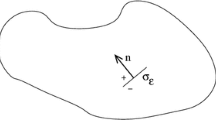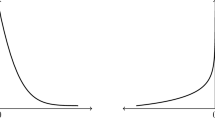We are concerned with the detection of edges—the location and amplitudes of jump discontinuities of piecewise smooth data realized in terms of its discrete grid values. We discuss the interplay between two approaches. One approach, realized in the physical space, is based on local differences and is typically limited to low-order of accuracy. An alternative approach developed in our previous work [Gelb and Tadmor, Appl. Comp. Harmonic Anal., 7, 101–135 (1999)] and realized in the dual Fourier space, is based on concentration factors; with a proper choice of concentration factors one can achieve higher-orders—in fact in [Gelb and Tadmor, SIAM J. Numer. Anal., 38, 1389–1408 (2001)] we constructed exponentially accurate edge detectors. Since the stencil of these highly-accurate detectors is global, an outside threshold parameter is required to avoid oscillations in the immediate neighborhood of discontinuities. In this paper we introduce an adaptive edge detection procedure based on a cross-breading between the local and global detectors. This is achieved by using the minmod limiter to suppress spurious oscillations near discontinuities while retaining high-order accuracy away from the jumps. The resulting method provides a family of robust, parameter-free edge-detectors for piecewise smooth data. We conclude with a series of one- and two-dimensional simulations.
Similar content being viewed by others
References
Archibald R., and Gelb A. (2002). Reducing the effects of noise in image reconstruction. J. Sci. Comp. 17(1–4):167–180
Archibald, R., and Gelb, A. (2002). A method to reduce the Gibbs ringing artifact in MRI scans while keeping tissue boundary Integrity. IEEE T. Med. Imaging, 21(4).
Bauer R. (1995). Band Filters for Determining Shock Locations, Ph.D. thesis, Applied mathematics, Brown University.
Brainiac, Scanning and Analysis Resources, Gabrieli Lab., Stanford University, http://.stanford.edu/brainiac.
Eckhoff K.S. (1995). Accurate reconstructions of functions of finite regularity from truncated series expansions. Math. Comp. 64:671–690
Fornberg B. (1996). A Practical Guide to Pseudospectral Methods. Cambridge University Press, Cambridge
Gelb A., and Tadmor E. (1999). Detection of edges in spectral data. Appl. Comp. Harmonic Anal. 7:101–135
Gelb A., and Tadmor E. (2001). Detection of edges in spectral data II. Nonlinear Enhancement. SIAM J. Numer. Anal. 38:1389–1408
Gelb A., and Tadmor E. (2002). Spectral reconstruction of piecewise smooth functions from their discrete data. Math. Model. Numer. Anal. 36(2):155–175
Gottlieb, D., and Shu, C.-W. (1997). On the Gibbs phenomenon and its resolution, SIAM Rev.
Harten A. (1983). High resolution schemes for hyperbolic conservation laws. J. Comput. Phys. 49:357–393
Jeffrey, A. (1995). Handbook of Mathematical Formulas and Integrals, Academic Press
Kvernadze G. (1998). Determination of the jump of a bounded function by its Fourier series. J. Approx. Theory 92:167–190
Liang, Z., and Lauterbur, P. (2000). Principles of Magnetic Resonance Imaging, a Signal Processing Perspective, IEEE Press.
Tadmor, E. (1998). Approximate solutions of nonlinear conservation laws, Advanced Numerical Approximation of Nonlinear Hyperbolic Equations, (A. Quarteroni ed.) Lecture notes in Mathematics, Vol. 1697, 1997 C.I.M.E. course in Cetraro, Italy, Springer Verlag, pp. 1–149.
Tadmor E., and Tanner J. (2002). Adaptive mollifiers – high resolution recovery of piecewise smooth data from its spectral information. Foundations Comput. Math. 2(2):155–189
Tadmor, E., and Tanner, J. Adaptive filters for piecewise smooth spectral data, IMA J. Numer. Anal. To appear.
Author information
Authors and Affiliations
Corresponding author
Additional information
To David Gottlieb, on his 60th birthday, with friendship and appreciation.
Rights and permissions
About this article
Cite this article
Gelb, A., Tadmor, E. Adaptive Edge Detectors for Piecewise Smooth Data Based on the minmod Limiter. J Sci Comput 28, 279–306 (2006). https://doi.org/10.1007/s10915-006-9088-6
Received:
Accepted:
Published:
Issue Date:
DOI: https://doi.org/10.1007/s10915-006-9088-6




